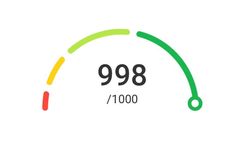Creating a savings plan can be the key to reaching your long-term financial goals.
Whether you're saving for an emergency, a retirement fund or a big purchase, having a structured plan can help you reach your goals faster and with less stress.
From setting clear goals to setting a realistic budget, these steps can help you improve your financial situation and achieve the financial freedom you desire.
Why is it important to have a savings plan?
Having a savings plan is critical to achieving our long-term financial goals.
Saving allows us to have a reserve of money for emergencies, to fulfill our dreams and objectives, and to be prepared for any unforeseen event.
In addition, having a savings plan helps us to be more disciplined with our money and allows us to have more effective financial control.
By setting specific goals and deadlines for achieving them, we can visualize our progress and adjust our budget accordingly.
What are your financial goals?
Before creating a savings plan, it is important to be clear about what your short, medium and long-term financial goals are.
These may include:
- Saving for emergencies;
- Paying off debts;
- Purchase of a home or vehicle;
- Retirement;
- Children's education;
- Investing in business or personal projects.
Setting short-term goals
One of the keys to creating an effective savings plan is to set short-term goals.
This means defining objectives that can be met in a short period of time, for example, one month or three months.
To set these short-term goals, it is important to consider your current financial situation and how much money you can dedicate to savings on a monthly basis.
Some examples of short-term goals might be:
- Save 10% of your salary this month;
- Save $500 pesos in the next two months;
- Pay off a debt in full this month.
When you set short-term goals, it is easier to stay motivated and focused on your financial objectives.
Set long-term goals
One of the keys to creating an effective savings plan is to set long-term goals.
This could be saving for your children's education, buying a home or even your retirement.
Once you have a clear goal in mind, you can create a realistic and measurable savings plan.
Analyze your income and expenses
The first step in creating an effective savings plan is to analyze your income and expenses in detail.
To do this, you need to make a list of all your monthly income, including any additional income you may earn from extra jobs or investments.
It is important to be honest with yourself and not leave any expenses out, even those that may seem insignificant.
Divide your expenses into categories such as housing, transportation, food, entertainment, etc.
If you have a negative balance or are barely making ends meet, you will need to look for ways to reduce your expenses or increase your income.
If you have a positive balance, you can start thinking about how to use that money to save and invest for the future.
Make a monthly budget
To create an effective savings plan, it is important to be clear about how much you earn and how much you spend.
Therefore, it is necessary to make a monthly budget that includes all fixed and variable expenses, as well as income.
It is advisable to make a detailed list of expenses, dividing them into categories such as housing, transportation, food, entertainment, among others.
In addition, it is important to establish a maximum amount for each category.
Identify unnecessary expenses
The first step to create an effective savings plan is to identify unnecessary expenses that may be present in our budget.
It is important to analyze which expenses are really necessary and which are not, in order to reduce them or eliminate them completely if possible.
One way to do this is to keep a detailed record of all the expenses we make during a month, including small purchases and payments.
Savings account or bank account
A savings account is an option for keeping cash in an interest-bearing account.
These accounts are generally offered by credit unions and other financial institutions and may require a minimum deposit.
Interest rates are usually low, but the funds are kept safe.
On the other hand, a bank account may require a higher minimum deposit and may come with a variety of fees and charges.
However, bank accounts offer additional services such as checking, credit and debit cards, online transactions and the ability to earn interest if a minimum balance is maintained.
Investing in mutual funds or stocks
Once you have an emergency fund established, it is important to consider how to invest some of your income.
There are several options available, but two of the most common are mutual funds and stocks.
Instead of buying individual stocks, invest in a fund that includes several different companies.
This reduces risk because if one company in the fund has problems, you won't lose all your money; you'll still have other investments that can offset those losses.
Commit to your savings plan
Creating an effective savings plan is only half the task; the other half is committing to following it.
Once you've set your goals and designed a plan to achieve them, it's important to stick to your plan.
Avoid unnecessary temptations, such as impulse spending or unnecessary purchases, and always remember your savings goals.
If you find it difficult to stay on track, you can try making small adjustments to your plan to better suit your needs and habits.











